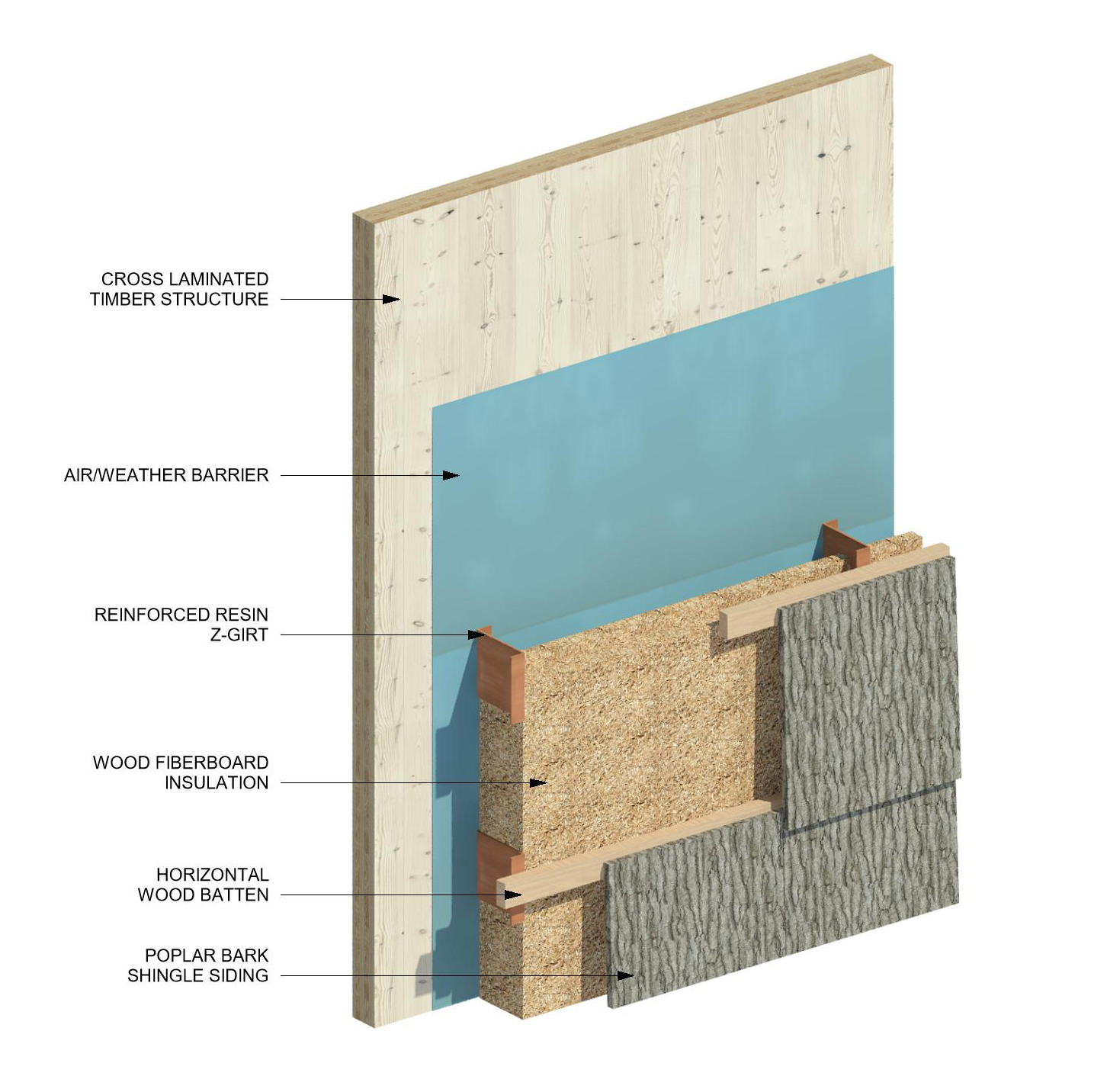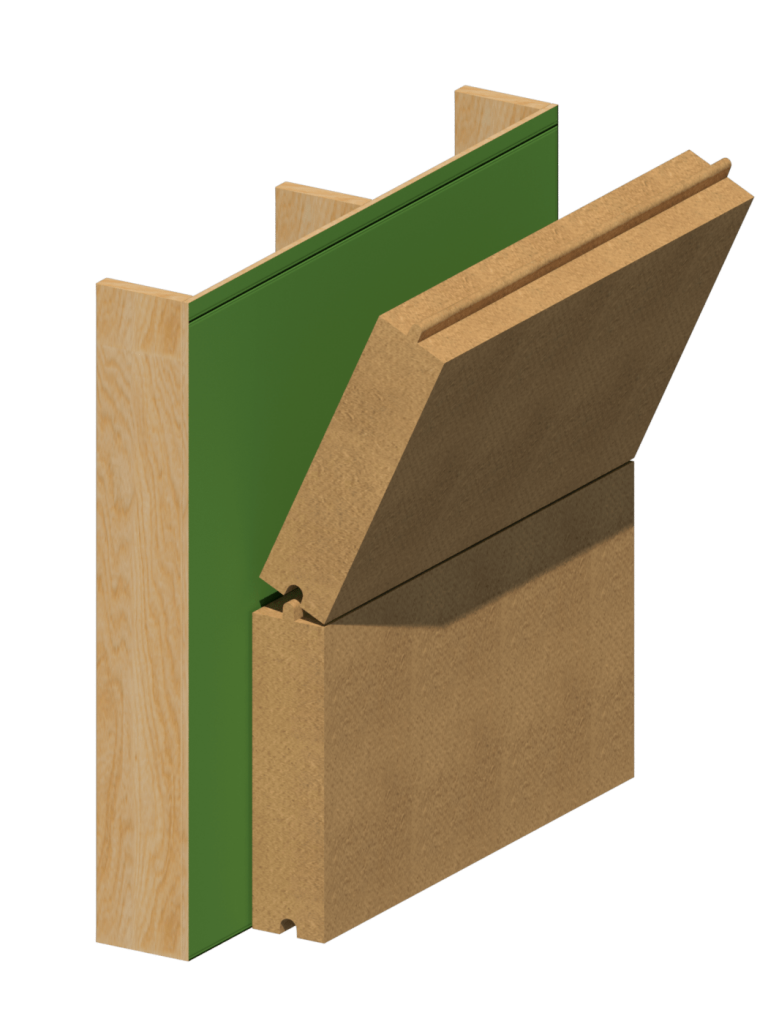GO Lab’s Wood Fiber Insulation
Dear Readers,
As many of you are already well aware, William and I are hopeful people. Admittedly, William more than I. I can be a bit of a negative nancy at times.
All optimism and pessimism aside, I like to think we can be quite grounded in our hope. One of the handful of products we are hoping on, and crossing our fingers that it may indeed be on the market by the time we actually build our house, is wood fiber insulation by Go Lab.
Expected to be on the market in 2022, Go Lab is bringing wood fiber insulation to the United States~ Maine, to be specific! They will offer wood fiber batt insulation, dense pack and loose fill wood fiber insulation, and continuous wood fiber board insulation. Which is great! Howeverrrrr…we really only want the continuous board wood fiber insulation.
When looking at William’s beautiful wall section and Go Lab’s image of their continuous board insulation…

William’s Beautiful Wall Section

Go Lab’s Continuous Board Insulation
…You may be able to see that the continuous board wood fiber insulation serves two fantastic purposes…one of which the other forms of insulation would not be ideal for in our specific home’s design.
The first purpose and why we need it for our home~ Cross Laminated Timber and Continuous Wood Fiber Board Insulation were just meant to be…
Continuous insulation essentially creates an all encompassing blanket around our structure, our cross laminated timber.
Mmmm….Cozy.
Especially when you consider each board having an R-value of 3.2 to 3.8 per inch…
The second purpose(s)~ But thermal comfort within the home is only one small part of it. All of the wood fiber insulation offered by Go Lab have the following benefits and purposes:1
Managing Moisture– No one likes a soggy building. Mold. Dampness. Just general discomfort…actually this is sounding a lot like Gollum’s cave, so maybe he appreciates soggy buildings…but a sophisticated hobbit such as Bilbo Baggins certainly would not!!
Wood fiber insulation is breathable, meaning that it has a high vapor permeability. It allows the damp, wet air to travel through the wood fiber and out of the home, thereby keeping both the inside and outside of the home dry.
Insulation for Summer and Winter– If I may be so bold to speak for the honorable Mr. Baggins, I do believe that if he had to live in a home that was not a hole in the ground, he himself would choose wood fiber insulation~ it very much mirrors the merits of living below ground in regards to temperature regulating all year round.
Wood fiber insulation will absorb heat slowly in the summer (thereby keeping the interior naturally cool), and then radiate heat in the winter (keeping the interior naturally warm). This is due to wood fiber insulation’s low thermal conductivity (and if you remember reading the blog “What does R-value Mean?” then you will recall that a low thermal conductivity means that material has a high R-value…which is a good thing!). Low thermal conductivity means that heat travels slowly through the material. So, when it is hot outside, the heat from outdoors will travel very slowly into the home. When it is cold outside, the heat from indoors will travel very slowly to the outdoors.
Which is all good and well, and means Bilbo could live in an above ground home, with all of the remaining comforts of his Hobbit den.
Sequesters Carbon…because it is wood.– You know what is in dirt? Decomposed organic matter. That includes wood. And poop..but that is covered in another blog…
And you know what is great about wood insulation versus other forms of insulation? It is like a carbon bank. All of that carbon the tree just sucked up during its lifespan is still there in the wood, no matter how small it has been ground down to. Wood fiber insulation is exactly that. It is wood fiber. When you cut it, you produce sawdust. All of the carbon remains sequestered in that wood until it is burned or decomposed. Which, if you are Bilbo Baggins, you wouldn’t burn your wood insulation. You would hopefully just let it decompose at the end of its useful life to become more dirt for another hobbit’s hobbit hole.
NOTE! The continuous wood fiber board insulation is composed of at least 90% softwood fiber, with the remaining 10-ish percent being PMDI Adhesive (wood adhesive that is formaldehyde-free) and Paraffin (wax).
Helping local forest economies (specifically Maine…)– Not that Bilbo Baggins probably feels any form of allegiance to the North Eastern United States of America…but! If he were a hobbit from our neck o’ the woods, I’m sure he would feel a sense of pride that he is helping out a local economy based on the sustainable harvesting and forestry of trees when he uses U.S. made wood fiber insulation.
I am not entirely sure how this blog evolved into an obsession with Bilbo Baggin’s choices in home building materials…maybe it is due to my psychologically suppressed inner desire to live in a hole just like a hobbit. But I married William. Who is a human in our modern age. And he likes building things above ground with straight lines and…angles. If I could at least convince him to incorporate one round door into The Seed’s design…I would be fulfilled. And just maybe stop forcing my fantasies into our current realities.
So….yes. Wood fiber insulation from GO Lab! Hopefully it will officially be on the market by 2022 when we actually start building this above-ground home of ours.
Thanks for reading!
Shelby
1. This information was obtained from~ TimberHP. “Product Merits,” 2021. GO Lab. https://golab.us. Accessed on 20 June 2021.
2 Comments
Submit a Comment
© 2020 Sustaining Tree
© 2020 Sustaining Tree

Great job by William on the wall section! I like the resin girts for reducing thermal transfer. The wood fiber insulation board at R-3 is just under an R-5 per inch pink insulation board value. The wood fiber board insulation appears more sustainable with the formaldehyde-free adhesive (PDMI) as opposed to the wood fiber batt insulation that contains “nylon stocking” (polyamides) fibers.
Thanks Frank! I like to think of it as a literal example of Joseph Lstirburek’s “perfect wall,” that’s simple, effective, carbon sequestering, and healthy (I always hated installing the itchy fiberglass, or being required to wear a mask to put insulation in a home). I’ll have to run some passive house numbers in the near future to see if it’s as efficient as it looks! Link to the perfect wall: https://www.buildingscience.com/documents/insights/bsi-001-the-perfect-wall